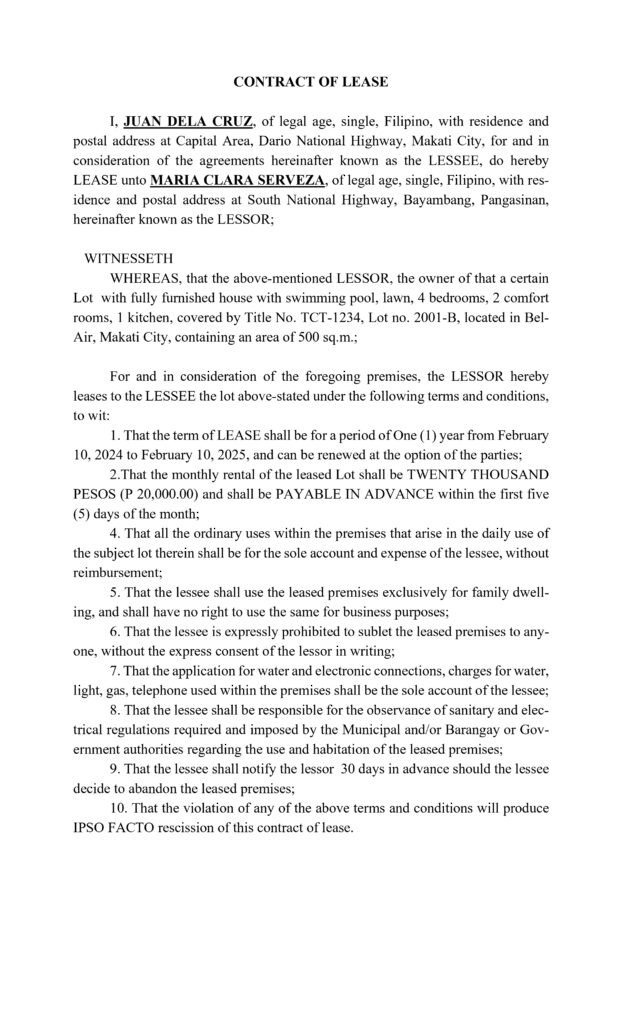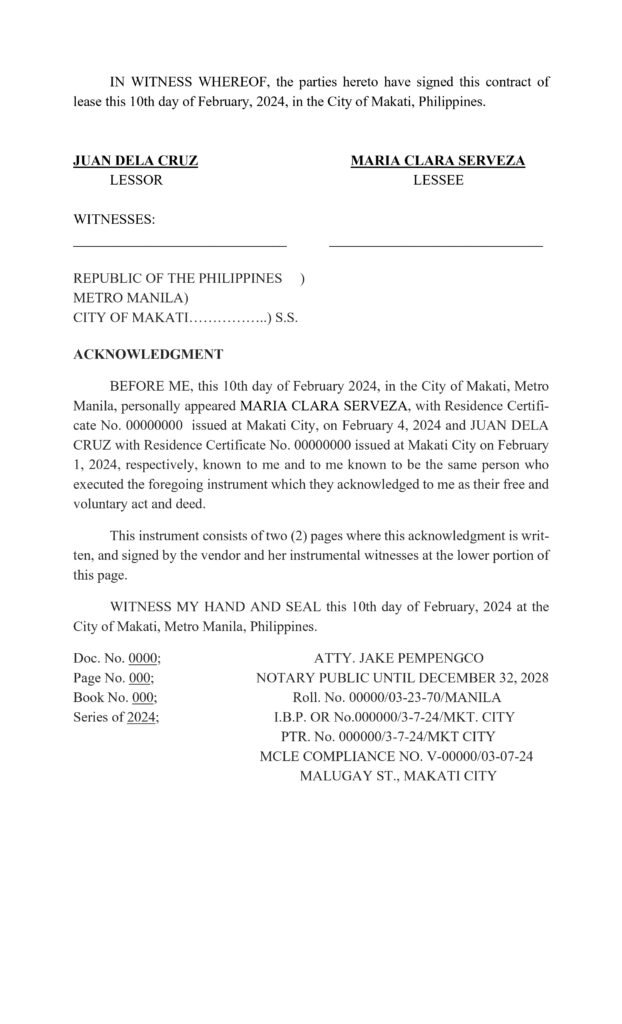Crafting a Comprehensive Lease Contract in the Philippines
When it comes to leasing a property in the Philippines, having a well-drafted lease contract is essential for both landlords and tenants. A lease contract serves as a legally binding agreement that outlines the terms and conditions of the lease, protecting the rights and responsibilities of both parties involved. In this article, we will guide you through the process of creating a comprehensive lease contract in the Philippines.
Gather the Necessary Information
Before you start drafting your lease contract, it’s important to gather all the necessary information. This includes the full names and contact details of both the landlord and the tenant, as well as the address and description of the property being leased. Additionally, you should determine the duration of the lease, the monthly rental fee, and any other terms or conditions you wish to include.
Include Essential Clauses
A well-rounded lease contract should include several essential clauses to protect the interests of both parties. Here are some key clauses to consider:
1. Lease Term
Clearly state the duration of the lease, whether it’s for a fixed term (e.g., one year) or on a month-to-month basis. Specify the start and end dates, as well as any provisions for renewal or termination.
2. Rent and Security Deposit
Specify the monthly rental fee and the due date for payment. Outline the consequences of late or non-payment. Additionally, include details about the security deposit, such as the amount, its purpose, and the conditions for its return.
3. Maintenance and Repairs
Determine the responsibilities of both the landlord and the tenant when it comes to property maintenance and repairs. Clarify who is responsible for routine maintenance tasks and who should cover the costs of repairs for damages caused by either party.
4. Use of Property
Define the permitted use of the property and any restrictions or limitations. Specify whether the property can be used for residential or commercial purposes, and outline any rules regarding subleasing or alterations to the premises.
5. Utilities and Services
Specify which utilities and services are included in the rental fee, such as water, electricity, and internet. Outline any additional charges or responsibilities related to these services.
6. Termination and Renewal
Outline the procedures and notice periods required for terminating or renewing the lease. Include provisions for early termination, breach of contract, or non-compliance with the terms and conditions.
Seek Legal Advice
While it’s possible to draft a lease contract on your own, it’s always advisable to seek legal advice to ensure that your contract complies with local laws and regulations. Consulting with a lawyer can help you identify any potential loopholes or areas of concern, protecting your rights and minimizing the risk of disputes in the future.
Finalize and Sign the Contract
Once you have drafted the lease contract and reviewed it with legal counsel, it’s time to finalize and sign the document. Make sure that both the landlord and the tenant carefully read and understand all the terms and conditions before signing. Consider having the contract notarized for added legal validity.
A comprehensive lease contract is a crucial document that establishes a clear understanding between landlords and tenants in the Philippines. By following these steps and seeking legal advice, you can create a lease contract that protects your interests and ensures a smooth and mutually beneficial leasing experience.
Below is example of a Sample Lease Contract















